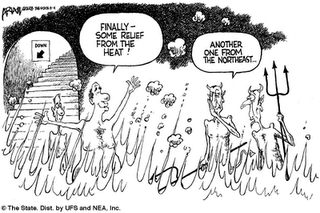This information was shared with me by a good friend of mine, Willa Edgerton Chisler. Thanks Willa!
Downsizing Survival Preparednessby Melissa A. Westmoreland
Chances are there are few of us who have not found ourselves out of work at one point. According to the Bureau of Labor Statistics, "During the January 2001 through December 2003 period, 5.3 million workers were displaced from jobs they held for at least 3 years…" More than one-third of these jobs were within manufacturing. Although there were a number of reasons--call it downsizing, rightsizing or re-engineering--it all equates to the same thing…unemployment. The Bureau of Labor Statistics also says the average number of "spells of unemployment" for late-born boomers (born between 1957 and 1964) from age 18 to 38 is 4.8. Most shocking of all is that within this study a little more than 4 out of 10 people were notified in advance of their being laid off. That means 60 percent were let go without warning.
The statistics indicate that many of us will experience being jobless at more than one point in time and possibly without notice; the best thing to do, then, is to have a plan in place. A plan can reduce the fear, stress, and anxiety of being out of work.
Here are five tips for downsizing survival preparedness:
Know the emergency exit systems for your organization.Familiarize yourself with your company's policies and benefits for terminated employees.
Know what your company has to offer for an employee assistance program.
Loss is loss. You may need someone to talk to. Counseling can do wonders to help you deal with the stress.
Know what your company has to offer in the way of benefits or COBRA (insurance continuance) and know what to expect in terms of time and cost.
Ask about outsourcing.
Find out if your employer sponsors such programs. This can help you with the task of becoming re-employed quicker. Don't be afraid to take advantage of it.
Prepare an emergency evacuation plan. (Protect your personal assets.)In the event you are downsized, chances are you will be asked to leave upon a moment's notice. You will most likely be supervised packing and exiting the building. If you take personal items to work, pack just what will fit in your car and make sure your employer knows what belongs to you. Keep a readily accessible list. Make it a habit to label your personal effects with your name. For large items, tape a copy of the receipt to the item. When it comes to paper, keep what is yours at home, as no one will want to spend hours watching you sift through file cabinets.
Prepare an emergency financial plan.
Money is usually the worry that drives all of the other fears. Keep a current list of all your investments and savings plans and think about how you would support yourself for several months. Think about possible ways to make a living until you can find a full-time job or things you own that you can sell. Be creative.
Remember that your organization could eliminate your job at the end of the year or ,worse yet, before the year-end holidays. Be prepared for the worst case financial scenario.
Prepare a career survival plan.
Finding a new job is most often the next fear. By having a financial plan in place, it will allow you more time to find the right position. Keep your resume updated. It is also a good idea to keep your resume actively posted on at least one job site to keep yourself abreast of the job market just in case you need it. Look periodically at job postings and know what they pay, where they are located, and if you would require additional education or certifications. Invest in continuing education to increase your marketability.
Be prepared to say good-bye.
People whom you once thought were your friends might distance themselves from you in the event of your departure. Many people are afraid unemployment is contagious. Remember, these people are coworkers and may not be friends after all.
Work friends will most likely stick by you but remember they still work there. Do not talk about work or they may stop talking to you, as well.
It has been said that when one door closes then another one opens. Remember this if you suddenly find yourself out of a job. If you have your plan in place, it might allow you the opportunity to take some time off and explore many options. If you plan well, perhaps it will give you time to complete your next degree or start your own business. It might also open you to a move into a new career area or a new part of the country. The difference between being a survivor and a victim is all in how well you plan.





